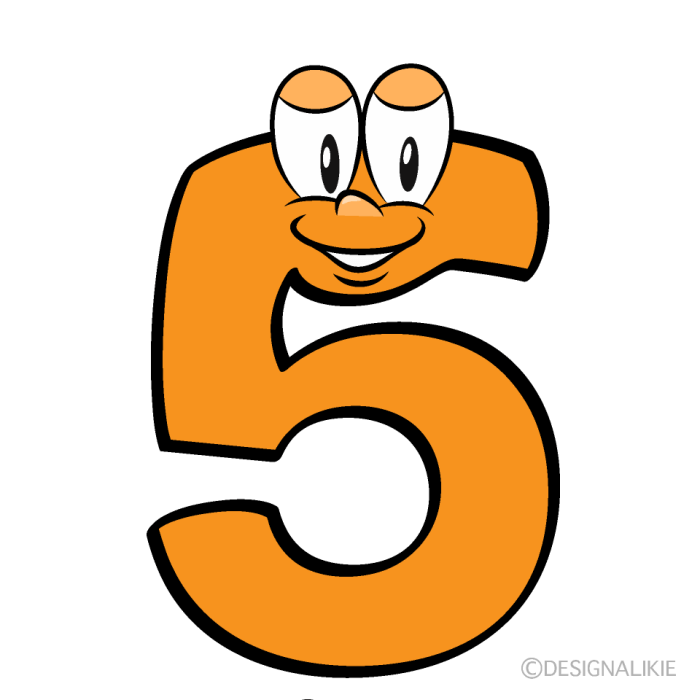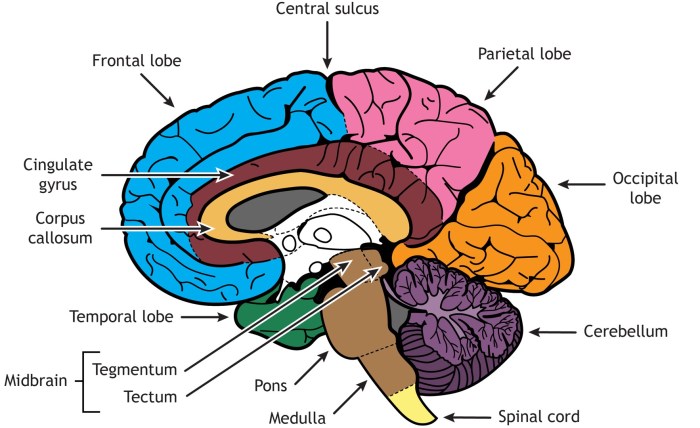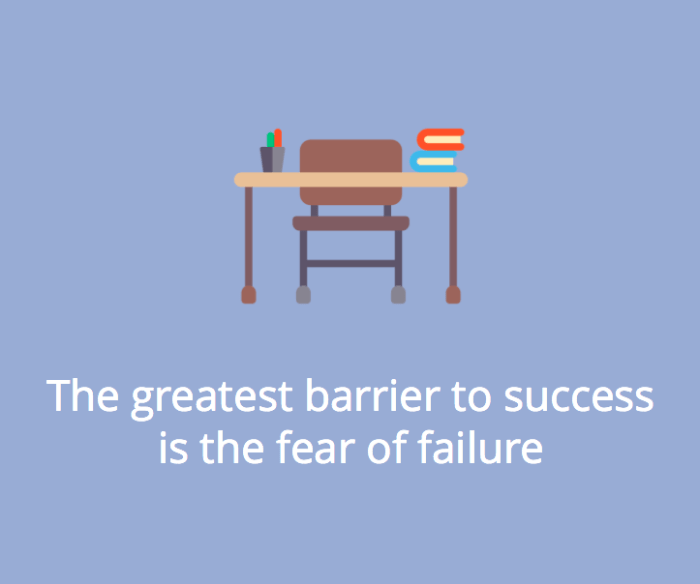5 easy steps make your writing stand out is a guide to elevate your writing from ordinary to extraordinary. This post will provide practical, actionable steps for crafting compelling introductions, building a strong structure, using vivid language, strengthening supporting evidence, and polishing for impact. Each step is accompanied by real-world examples and actionable techniques to immediately improve your writing.
By following these steps, you can learn how to captivate readers, express your ideas with clarity and confidence, and create writing that leaves a lasting impression. Get ready to unlock the secrets to writing that stands out!
Crafting Compelling Introductions
A captivating introduction is the key to drawing readers into your writing. It’s the first impression, and it sets the stage for the entire piece. A strong introduction not only grabs attention but also establishes your credibility and previews the value the reader will find within. Whether you’re writing a blog post, an academic essay, or a news article, a compelling introduction is essential.
Crafting one requires more than just a few well-chosen words; it demands a thoughtful strategy to hook the reader and lead them into your argument.Effective introductions create a powerful first impression, setting the stage for the rest of your writing. They do more than just state the topic; they pique the reader’s curiosity, establish your authority, and hint at the value they will gain.
Methods for Grabbing Reader Attention
A strong introduction often employs several strategies to capture and hold the reader’s attention. This involves various techniques that create a sense of intrigue and anticipation, leading the reader into the core of your writing. Below are five distinct approaches for achieving this:
- Intriguing Anecdotes: A well-chosen anecdote can instantly engage the reader by creating a relatable and memorable experience. This approach immediately draws the reader in and establishes a connection with the topic.
- Thought-Provoking Questions: Questions can stimulate curiosity and encourage active engagement. They invite the reader to think critically about the topic, making them an active participant in the discussion.
- Startling Statistics or Data: Numbers and data can grab attention by presenting compelling evidence and highlighting the significance of the topic. They can reveal surprising facts and add credibility to your arguments.
- A Strong Thesis Statement: A concise and clear thesis statement presents the central argument of your writing. It informs the reader about the direction of the piece and sets the expectation for the subsequent arguments.
- A Hook-Based Introduction: This approach focuses on immediately drawing the reader in with a captivating hook that grabs their attention and curiosity. This might include a surprising fact, a thought-provoking question, a powerful quote, or an anecdote.
Using Anecdotes and Questions Effectively
Anecdotes and thought-provoking questions can significantly enhance your introduction by making it more relatable and engaging. An anecdote, when well-chosen, allows readers to connect with the topic on a personal level. A question can spark curiosity and encourage the reader to consider different perspectives.
- Intriguing Anecdotes: Instead of simply stating a fact, an anecdote allows the reader to experience the topic through a story. For example, rather than saying “many people struggle with writing,” you could share a personal experience about a challenging writing assignment or a moment of inspiration that changed your approach to writing.
- Thought-Provoking Questions: Questions are powerful tools for engaging the reader and prompting critical thinking. For instance, instead of directly stating the problem of plagiarism, you could ask, “How can we encourage academic integrity in today’s digital age?” This encourages the reader to think about the complexities of the topic.
Impact of a Strong Thesis Statement
A clear thesis statement provides a roadmap for your entire piece, guiding the reader through your argument and highlighting the value of your insights. It establishes the main point of your work and sets the expectations for the subsequent paragraphs.
Examples of Effective Openings
To illustrate the different approaches, consider these examples from various genres:
| Writing Style | Opening Technique | Example Sentence | Impact on Reader |
|---|---|---|---|
| Blog Post | Intriguing Anecdote | “I remember the first time I tried to write a blog post. I was terrified. I didn’t know how to start, what to write, or even if anyone would read it.” | Relatable and engaging, immediately establishing a connection with the reader. |
| Academic Essay | Thought-Provoking Question | “Is the pursuit of happiness a universal human desire, or is it culturally constructed?” | Prompts critical thinking and encourages the reader to consider different perspectives. |
| News Article | Startling Statistic | “Nearly 70% of students report feeling overwhelmed by the pressure to succeed academically.” | Captivates the reader with compelling data, highlighting the significance of the issue. |
| Formal Letter | Strong Thesis Statement | “This letter argues that the current educational system needs reform to better prepare students for the demands of the 21st century.” | Clearly establishes the core argument and sets the tone for the rest of the letter. |
Building a Solid Structure
A well-structured piece of writing is like a carefully crafted building; it needs a strong foundation to support its weight and ensure it stands the test of time. A logical flow isn’t just about arranging sentences; it’s about guiding the reader through a clear and coherent argument, ensuring they understand the connection between ideas and ultimately, grasp the intended message.
This structure provides a framework for the content, making it more accessible and impactful.A strong structure is crucial for conveying information effectively. By organizing ideas logically, you can enhance readability and improve the overall impact of your writing. This structured approach clarifies the relationship between your arguments, creating a cohesive and compelling narrative for your reader. It’s not just about the arrangement of words, but the underlying architecture of the thoughts and ideas.
Organizational Patterns for Argumentative Essays
Understanding different organizational patterns is essential for crafting a strong argumentative essay. These patterns provide a framework for arranging supporting arguments and evidence to build a persuasive case. They determine how your essay will flow and influence the reader’s understanding of your perspective.
Want to spice up your writing? Five easy steps can make all the difference. First, grab a great idea! Then, explore some new angles, like 10 incredibly addictive new ways to eat asparagus —the unique flavor combinations can spark inspiration. Finally, remember to be clear, concise, and engaging, and your writing will shine.
- Chronological Structure: This structure arranges events in the order they occurred. It’s ideal for historical analyses, process descriptions, or narratives. It allows for a clear progression of events, making it easy for the reader to follow the timeline and understand the development of a situation or concept.
- Thematic Structure: This structure groups related ideas under overarching themes or topics. It’s useful when exploring various aspects of a single subject or when comparing and contrasting different viewpoints. This structure can highlight connections and create a layered understanding of the topic.
- Comparative Structure: This structure analyzes similarities and differences between two or more subjects or ideas. It’s useful for evaluating different approaches to a problem or comparing the effectiveness of different solutions. This approach helps the reader identify key similarities and differences, potentially leading to a more informed perspective.
Comparing Chronological and Thematic Structures
Chronological and thematic structures, while both valuable, have different strengths and weaknesses depending on the subject matter. A chronological structure excels in narrating events, providing a step-by-step account, while a thematic structure excels in analyzing concepts or exploring diverse perspectives. Consider the purpose of your writing when choosing the most appropriate structure.
- Chronological structure excels at tracing the development of events, especially in historical accounts or narratives, allowing the reader to understand the evolution of a situation or concept over time. For instance, if you are writing about the evolution of a technology, detailing its development chronologically can effectively illustrate its progress.
- Thematic structure allows for a deeper exploration of interconnected ideas. If you are exploring different approaches to a problem or comparing different viewpoints on a complex issue, a thematic structure allows for a focused analysis of various aspects of the topic. For example, in an essay about the impact of social media, a thematic approach could analyze its effects on mental health, social interactions, and political discourse.
Effective Transitions Between Paragraphs
Smooth transitions between paragraphs are essential for creating a coherent flow. They bridge the gap between ideas, ensuring the reader can follow the logical progression of the argument. Using transitional phrases, words, or sentences helps the reader connect the previous paragraph to the current one, making the reading experience more fluid and impactful.
- Effective transitions use words and phrases like “however,” “therefore,” “similarly,” “in contrast,” and “furthermore” to guide the reader through the connections between ideas. Using synonyms and related words can also help connect sentences and paragraphs.
Creating a Roadmap for the Reader
Using headings and subheadings is crucial for creating a clear roadmap for the reader. These elements provide a hierarchical structure, enabling the reader to quickly grasp the main points and sub-points of the argument. This visual organization helps the reader understand the overall structure and navigate through the essay efficiently.
| Structure type | Key features | Example | Explanation of effectiveness |
|---|---|---|---|
| Chronological | Arranges events in order of occurrence | The history of the printing press, from Gutenberg’s invention to modern digital printing | Provides a clear progression, easy to follow, ideal for historical accounts or processes |
| Thematic | Groups related ideas under themes | The impact of social media on interpersonal communication, considering themes of connection, isolation, and identity | Allows for in-depth analysis of a topic’s different aspects |
| Comparative | Analyzes similarities and differences | Comparing the effectiveness of different leadership styles | Helps the reader identify key similarities and differences, allowing for a balanced and informed perspective |
| Problem-Solution | Identifies a problem and proposes solutions | The issue of plastic pollution and the potential solutions involving recycling, biodegradable materials, and public awareness | Provides a clear path for the reader to understand the problem and potential resolutions |
Using Vivid Language

Bringing your writing to life is about more than just conveying information; it’s about captivating your reader. Descriptive language, with its ability to paint pictures and evoke emotions, is crucial for engaging writing. Using vivid language helps readers connect with your content on a deeper level, making your ideas more memorable and impactful. This involves more than just stating facts; it’s about immersing your readers in the experience.Strong descriptive language creates a more visceral and engaging experience for the reader.
By employing sensory details, you can bring your writing to life, making it more memorable and impactful. Figurative language, like metaphors and similes, adds depth and richness to your prose, allowing you to express complex ideas in a more creative and compelling way. Choosing precise and evocative words over bland alternatives is a key component of effective writing.
By understanding the power of vivid language, you can elevate your writing from simply informative to truly engaging.
Sensory Details and Figurative Language
Sensory details are essential for bringing your writing to life. They appeal to the reader’s senses, allowing them to visualize, hear, smell, taste, and touch the events or ideas you’re describing. For example, instead of saying “The house was old,” you could say “The house, weathered and gray, whispered tales of forgotten summers, its peeling paint a testament to time’s relentless passage.” This richer description appeals to multiple senses, creating a more complete and engaging picture.
Figurative language, including metaphors and similes, further enhances the descriptive power of your writing. Metaphors make implicit comparisons, while similes use “like” or “as” to draw explicit comparisons. Both techniques add depth and creativity to your writing. For instance, instead of saying “The argument was heated,” you could say “The argument raged like a wildfire, consuming everything in its path.” This vivid imagery makes the argument more palpable and memorable for the reader.
Strong Verbs
Strong verbs replace weak verbs to add punch and energy to your writing. Weak verbs often lack specific action, making the writing feel flat and uninspired. Strong verbs, on the other hand, are dynamic and precise, conveying action and character with clarity.
- Instead of “The report stated,” try “The report declared,” “The report highlighted,” “The report revealed,” “The report emphasized,” or “The report asserted.” These alternatives add more impact and authority to the sentence.
Metaphors and Similes
Metaphors and similes are powerful tools for creating vivid imagery and making your writing more memorable. They make implicit or explicit comparisons, allowing you to convey complex ideas in a more creative and compelling way. For example, instead of saying “The city was large,” you could say “The city sprawled like a monstrous beast, its tentacles reaching out into the surrounding landscape.” This simile paints a more vivid picture of the city’s scale and impact.
Active Voice vs. Passive Voice
Using active voice is generally preferable to passive voice in most cases. Active voice makes your writing clearer and more direct. It emphasizes the subject of the sentence and its actions, while passive voice can obscure the agency and lead to less engaging writing. In active voice, the subject performs the action, while in passive voice, the subject receives the action.
Active voice makes your writing more direct and impactful.
Table: Weak vs. Strong Verbs
| Weak Word | Strong Alternative | Example Sentence | Explanation of Improvement |
|---|---|---|---|
| Said | Declared | The professor said the answer was wrong. | “Declared” is more emphatic and authoritative than “said.” |
| Went | Marched | The protesters went to the capitol. | “Marched” implies a more purposeful and determined action than “went.” |
| Made | Forged | She made a plan. | “Forged” suggests a more deliberate and significant plan-making process. |
| Was | Became | The sky was dark. | “Became” implies a change or progression, which “was” does not. |
| Have | Possess | I have a car. | “Possess” is more formal and precise. |
Strengthening Supporting Evidence: 5 Easy Steps Make Your Writing Stand Out

Evidence is the bedrock of compelling writing. Without strong supporting evidence, even the most engaging prose can crumble. Solid evidence builds credibility, reinforces your claims, and ultimately persuades your reader. This section dives into the art of using evidence effectively to elevate your writing.
Want to elevate your writing game? Five simple steps can make all the difference. First, focus on clarity and conciseness. Second, use strong verbs and vivid imagery. Third, tailor your writing to your audience.
Fourth, find inspiration in unexpected places, like, for example, in the fascinating reasons why people who appreciate the rain might be happier overall. 7 reasons why people who enjoy the rain are happier life. Finally, always proofread carefully before hitting publish. These five simple steps will undoubtedly help your writing stand out from the crowd.
The Significance of Incorporating Evidence
Evidence breathes life into your writing. It moves beyond opinion and conjecture, grounding your arguments in reality. By supporting your claims with verifiable facts, statistics, examples, and expert opinions, you establish your authority and showcase your research. Readers are more likely to trust and engage with writing that demonstrates a thorough understanding of the subject.
Want to make your writing pop? Five easy steps can help! Stronger prose isn’t just about fancy words; it’s also about knowing your audience. And speaking of knowing your audience, if you’re in your 30s, check out these 8 crucial financial moves make your 30s to ensure a secure future. 8 crucial financial moves make your 30s These moves will also help you focus on your writing goals.
Ultimately, good writing is about clear communication and engaging your reader, so keep practicing those 5 steps!
Using Credible Sources Effectively, 5 easy steps make your writing stand out
Selecting credible sources is paramount. Look for reputable academic journals, well-established news organizations, and recognized experts in your field. Avoid sources that are biased, unreliable, or lacking in factual support. Checking for author credentials and publication history helps you determine the source’s trustworthiness. Always cite your sources properly to give credit where it’s due and to allow your readers to verify your information.
Paraphrasing and Quoting Material Correctly
Accurate paraphrasing and quoting are essential for ethical writing. Paraphrasing involves expressing another author’s ideas in your own words, while quoting directly captures their exact phrasing. Properly attributed quotations maintain the integrity of the original text. Always use quotation marks for direct quotes and cite the source to avoid plagiarism. Crucially, paraphrase when you want to convey the general idea and quote when the author’s specific phrasing is important.
Organizing and Presenting Evidence Clearly
Organizing your evidence logically enhances readability and persuasiveness. Group related pieces of evidence together, and present them in a clear and concise manner. Consider using headings, subheadings, bullet points, or short paragraphs to structure your evidence effectively. Avoid overwhelming your readers with a large block of evidence. Break it up into manageable chunks for improved comprehension.
Integrating Quotes Smoothly
Integrating quotes smoothly into your writing requires careful consideration. Introduce the quote with a lead-in sentence that explains the context of the quote and connects it to your overall argument. Ensure the quote fits naturally within the flow of your sentences. Avoid abrupt or jarring transitions. For instance, rather than simply dropping a quote in the middle of a paragraph, seamlessly weave it into the sentence structure.
Example of Evidence Integration
| Type of Evidence | Source | Paraphrased summary | In-text citation |
|---|---|---|---|
| Quote | Smith, J. (2023). The Impact of Social Media. Journal of Digital Culture, 12(3), 12-28. | Smith argues that social media has profoundly altered communication patterns, creating both opportunities and challenges. | (Smith, 2023, p. 17) |
| Statistic | Pew Research Center (2022). Social Media Use in the US. Pew Research Center. | Over 70% of Americans use social media at least once a day. | (Pew Research Center, 2022) |
| Example | News Article (2023). Social Media’s Influence on Youth. The Guardian. | A recent case study highlights the potential negative impacts of social media on teenagers’ mental health. | (News Article, 2023) |
Polishing for Impact
The final step in crafting compelling writing involves meticulous polishing. Proofreading and editing are not simply about finding errors; they are about refining your message for maximum impact. By carefully reviewing your work, you can ensure clarity, consistency, and professionalism, all of which contribute to a stronger and more persuasive piece. This final stage ensures your words resonate with your intended audience and leave a lasting impression.
Proofreading Strategies
Thorough proofreading is crucial for identifying and correcting errors that can undermine your message. Effective strategies involve multiple passes, focusing on different aspects of your writing each time. Begin with a general overview, looking for structural issues and inconsistencies. Subsequent passes should focus on grammar, mechanics, and style. Reading aloud can help you identify awkward phrasing or errors you might otherwise miss.
Having a fresh pair of eyes review your work is also beneficial, as a different perspective can catch errors you’ve overlooked.
Grammar and Mechanics
Maintaining clarity is paramount. Correct grammar and mechanics are fundamental to effective communication. Grammatical errors and inconsistencies in punctuation and capitalization can confuse or distract the reader, diminishing the overall impact of your writing. Understanding and adhering to basic grammar rules and mechanical conventions creates a professional and polished appearance, enhancing credibility and trust.
Style Guides
Style guides provide a consistent framework for formatting and style. They offer specific rules and examples that can help you maintain a uniform voice and tone throughout your writing. Using a style guide, like the Chicago Manual of Style or the Associated Press Stylebook, ensures consistency in formatting, citation, and usage of terms. This standardization creates a professional look and reinforces the credibility of your work.
Error Identification and Correction
Identifying errors requires a keen eye and a systematic approach. Start by reviewing your work with a focus on specific areas, such as grammar, punctuation, or sentence structure. Use a dictionary or style guide to check unfamiliar words or to ensure proper usage. Use online tools for grammar and spell check to augment your review. Consider having a colleague review your work, as fresh eyes can often catch errors that you’ve missed.
Refining for Impact
Beyond correcting errors, refining your writing involves enhancing its overall impact. Ensure your language is precise and engaging. Active voice, strong verbs, and vivid descriptions can make your writing more dynamic and captivating. Consider the tone and style of your target audience. Adapt your writing to resonate with them and convey your message effectively.
Error Identification Table
| Error Type | Explanation | Example | Correction |
|---|---|---|---|
| Subject-Verb Agreement | The subject and verb in a sentence must agree in number. | The team is playing well. | The team are playing well. |
| Comma Splices | Two independent clauses cannot be joined with only a comma. | The dog barked, the cat ran. | The dog barked; the cat ran. |
| Run-on Sentences | Two or more independent clauses joined together without proper punctuation. | The cat sat on the mat and it purred softly. | The cat sat on the mat, and it purred softly. |
| Misplaced Modifiers | Modifiers are not placed next to the word or phrase they modify. | She saw a cat wearing a hat. | She saw a cat wearing a hat. |
Closure
In conclusion, crafting impactful writing isn’t about magic, but about mastering fundamental principles. By focusing on compelling introductions, a strong structure, vivid language, solid evidence, and meticulous polishing, you can elevate your writing to a new level. These 5 easy steps make your writing stand out offer a practical framework for transforming your writing process and producing work that truly resonates with your audience.
So, go forth and write with confidence!








